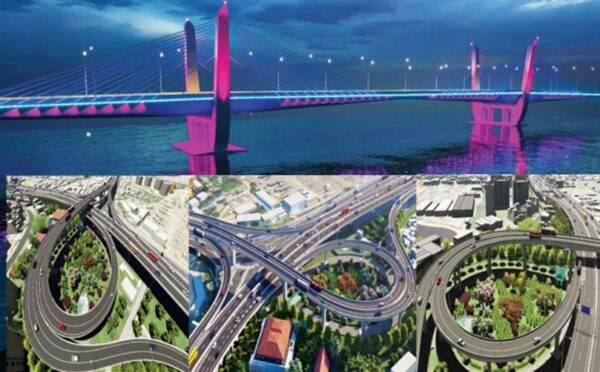New Kelani Bridge: Sri Lanka benefits from direct technology transfer-by Sanath Nanayakkare

Source:Island
Project saw equal involvement of both Japanese and Sri Lankan engineers
The new bridge across the Kelani river at Peliyagoda – the first extradosed bridge built in Sri Lanka – which is set to be opened soon, saw equal involvement of both Japanese and Sri Lankan engineers, facilitating sustainable technology transfer to Sri Lankan professionals and sub-contracting Sri Lankan companies, Japan International Cooperation Agency (JICA) told the media recently.
“Notably, the project team from Road Development Authority (RDA) – the implementing agency for the Project employed women at professional and management levels, at equal pay as men. The total number of women employed was low compared to the number of men, but Sri Lankan women held key positions such as Project Director from Road Development Authority, and as site engineers and quantity surveyors, thus enabling a direct transfer of technological know-how to Sri Lankan women professionals as well. That was a key feature of this project,” JICA said.
“During the implementation period, the Project team had to face extreme floods, the tragedy of Easter explosions, and the recent global pandemic. Yet they held together, adapting to the situations and adopting innovative measures to secure the safety of project personnel as well as the neighboring communities. Through their determination and teamwork, the project could be completed with the minimum delay despite the gravity of the issues they faced, “JICA said.
Elaborating on the Joint Venture (JV) JICA further said: “The project financed through an Official Development Assistance loan from JICA connects the Orugodawatte and Ingurukade Intersections with the Colombo-Katunayake expressway, enabling seamless flow of traffic – especially for cargo – between Port, Airport and cargo terminals,” they said.
“Environmental and Social Considerations crucial elements in the projects were also financed by JICA. The loan conditions mandate compliance with not only the country regulations, but also the requirements of JICA’s guidelines. In the project, the environmental impact assessment and the resettlement action plan were prepared well in advance, so that the findings and requirements of both were integrated into project design. The project contributed to the improvement of air and water quality in the project area and restoration of bio diversity in the river banks.”
“On social considerations, the project enabled 320 non-titled householders relocated from the river reservation to begin new lives and livelihoods in new homes which they now own.”
“The extradosed design enabled the bridge to span the entire width of the river without a single pier in the water. The bridge approach viaducts of steel box girders were assembled in-situ (in the original place), which is another first in Sri Lanka. This technique enabled space saving and minimum obstruction to traffic at a heavily congested road section.”
“While the technology itself is remarkable, even more so was that it was implemented with equal involvement of both Japanese and Sri Lankan engineers, enabling sustainable transfer of technology.” JICA said.







